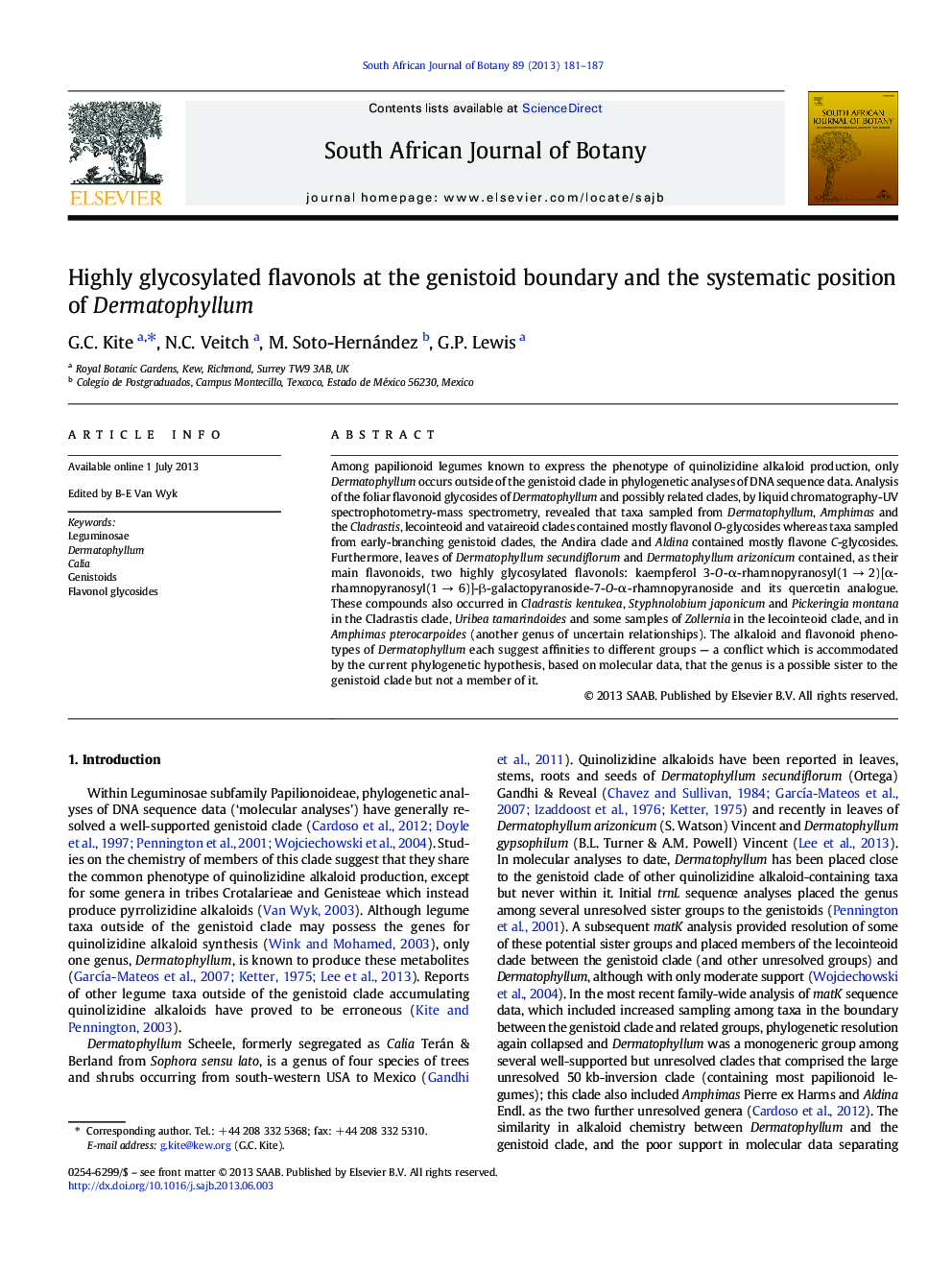| Article ID | Journal | Published Year | Pages | File Type |
|---|---|---|---|---|
| 6379011 | South African Journal of Botany | 2013 | 7 Pages |
Abstract
Among papilionoid legumes known to express the phenotype of quinolizidine alkaloid production, only Dermatophyllum occurs outside of the genistoid clade in phylogenetic analyses of DNA sequence data. Analysis of the foliar flavonoid glycosides of Dermatophyllum and possibly related clades, by liquid chromatography-UV spectrophotometry-mass spectrometry, revealed that taxa sampled from Dermatophyllum, Amphimas and the Cladrastis, lecointeoid and vataireoid clades contained mostly flavonol O-glycosides whereas taxa sampled from early-branching genistoid clades, the Andira clade and Aldina contained mostly flavone C-glycosides. Furthermore, leaves of Dermatophyllum secundiflorum and Dermatophyllum arizonicum contained, as their main flavonoids, two highly glycosylated flavonols: kaempferol 3-O-α-rhamnopyranosyl(1 â 2)[α-rhamnopyranosyl(1 â 6)]-β-galactopyranoside-7-O-α-rhamnopyranoside and its quercetin analogue. These compounds also occurred in Cladrastis kentukea, Styphnolobium japonicum and Pickeringia montana in the Cladrastis clade, Uribea tamarindoides and some samples of Zollernia in the lecointeoid clade, and in Amphimas pterocarpoides (another genus of uncertain relationships). The alkaloid and flavonoid phenotypes of Dermatophyllum each suggest affinities to different groups - a conflict which is accommodated by the current phylogenetic hypothesis, based on molecular data, that the genus is a possible sister to the genistoid clade but not a member of it.
Keywords
Related Topics
Life Sciences
Agricultural and Biological Sciences
Agronomy and Crop Science
Authors
G.C. Kite, N.C. Veitch, M. Soto-Hernández, G.P. Lewis,
